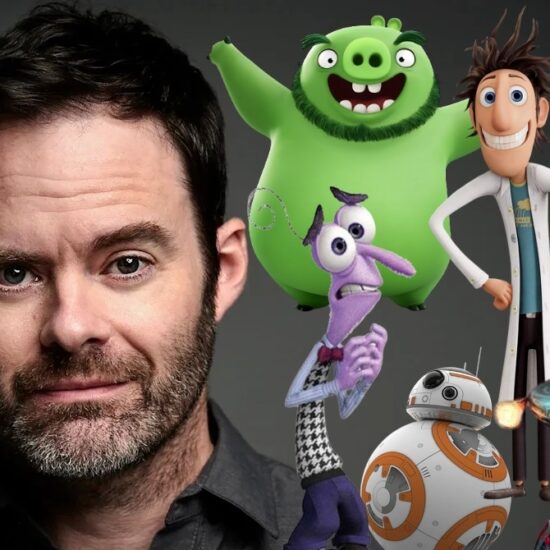
Disagreements over a wide array of issues — from wage increases to a revenue-sharing plan for streaming platforms to meal break penalty increases — split Hollywood companies and performers’ union SAG-AFTRA in their negotiations that collapsed on July 12.
Meanwhile, some progress was made during the five weeks of negotiations on issues including schedule breaks, compensation for the translation of scripts and some self-taped audition restrictions, SAG-AFTRA claimed in a message to members on Monday that included an extensive chart of their proposals and the companies’ alleged responses. Though the message was frequently light on specifics about SAG-AFTRA’s proposals and the AMPTP’s responses, it did paint a portait of two sides that remain very far apart from a deal.
The AMPTP, meanwhile, said in a statement that SAG-AFTRA continues to “mischaracterize” the two parties’ discussions. “Not only does its press release deliberately distort the offers made by AMPTP, it also fails to include the proposals offered verbally to SAG-AFTRA leadership on July 12,” the Alliance said. According to the group, which represents studios and streamers in negotiations, its July 12 offer to the union is valued at over $1 billion in wage improvements, residual increases and pension and health contributions.
When it comes to general minimum rate increases, the union was seeking to implement 11 percent wage boost in the first year of the new contract, 4 percent in the second year and 4 percent in the third year during their 2023 TV/theatrical negotiations. The studios and streamers maintained they would only offer 5, 4 and 3.5 percent in the three years of the agreement, SAG-AFTRA claimed, which are the same rate increases that the Directors Guild of America agreed to in its 2023 contract, ratified in June. (In its statement on Monday, the AMPTP called its offer the “highest percentage increase in minimums in 35 years.”) As another means of increasing member compensation, the union additionally proposed that casts take a cut of subscriber revenue “generated when their performances are exhibited on streaming platforms,” which the AMPTP outright rejected, per the labor group.
On another key issue, that of regulating generative artificial intelligence, SAG-AFTRA was vague about its proposals and the AMPTP’s responses. The union was seeking to “establish a comprehensive set of provisions to protect human-created work and require informed consent and fair compensation when a ‘digital replica’ is made of a performer, or when their voice, likeness, or performance will be substantially changed using AI.” The AMPTP, the union claimed, “failed to address many vital concerns, leaving principal performers and background actors vulnerable to having most of their work replaced by digital replicas.”
The AMPTP, meanwhile, called its offer on the rapidly changing technology “groundbreaking” and said it “protects performers’ digital likenesses, including a requirement for performer’s consent for the creation and use of digital replicas or for digital alterations of a performance.”
Other notable disagreements flagged by the union in Monday’s message pertained to increasing “span” figures (SAG-AFTRA said the companies’ suggestion was “inadequate”) and boosting long-stagnant pension and health plan contribution “caps” that limit how much of a members’ earnings can be calculated towards contributions to the union’s benefits plans (the studios countered with “insufficient increases,” the union said; the AMPTP said its proposed increases were “substantial”). The two likewise couldn’t agree on the size of relocation allowances, for when a performer works in a state or country outside where they live, that meal break penalties should be increased or that performance-capture work can be covered by a SAG-AFTRA contract.
There were some areas where they reached early tentative agreements, however (which are still subject to change when the two parties go back to the bargaining table). On self-taped auditions, one major area of concern for the union, which maintains that these kinds of tryouts place undue burden on performers, the union says the studios and streamers “tentatively agreed to some but not all necessary regulations,” including a compromise on turnaround times, but without a real means of enforcement. The parties likewise agreed that actors should not be required to translate scripts without compensation and that both sides should “conform to the minimum payments that performers must receive before their employers can invoke the various ‘schedules’ under which members lose entitlement to additional payments such as weekly overtime.”
In its statement, the AMPTP additionally said it further offered the union a 76 percent increase in high-budget foreign streaming residuals and a 58 percent increase in wages for guest star roles on high-budget streaming projects. The studios and streamers offered to establish terms and conditions for high-budget AVOD projects and fixed residuals for stunt coordinators on television and high-budget streaming projects, the group added. (SAG-AFTRA has said these residuals would be “calculated as if they only worked one day” even if stunt coordinators worked for longer.)
SAG-AFTRA called a strike to start July 14 after its film and television contract expired and it and the AMPTP did not reach a deal on a new three-year pact. After five weeks of negotiation, major studios and streamers offered a deal that was “insulting,” claimed SAG-AFTRA president Fran Drescher on Thursday. “It came with great sadness that we came to this crossroads. We had no choice,” she said. The AMPTP, on the other hand, has said that the union had rejected a favorable package offer and “regrettably chosen a path that will lead to financial hardship for countless thousands of people who depend on the industry.”
Though SAG-AFTRA initially signaled to members that negotiations had been “extremely productive” in June, the tone took a turn in the days leading up to the contract package’s expiration. The union began preparing major PR firms and hundreds of agents for a strike, and the AMPTP requested assistance from the Federal Mediation & Conciliation Service. SAG-AFTRA agreed to bring in the service, present at talks on Wednesday, but did not allow an extension of discussions, saying it was wary of a “cynical ploy” on the part of companies.
Starting July 14, SAG-AFTRA members have been picketing studio lots and corporate sites in Los Angeles and New York while major productions — including Deadpool 3, Mission Impossible 8 and Venom 3 — have shut down or been delayed without their performers. The AMPTP and SAG-AFTRA have not yet publicly released a date when they will return to the bargaining table.
July 17, 9:40 p.m. Updated with AMPTP response.













